#NaturalGas
Text
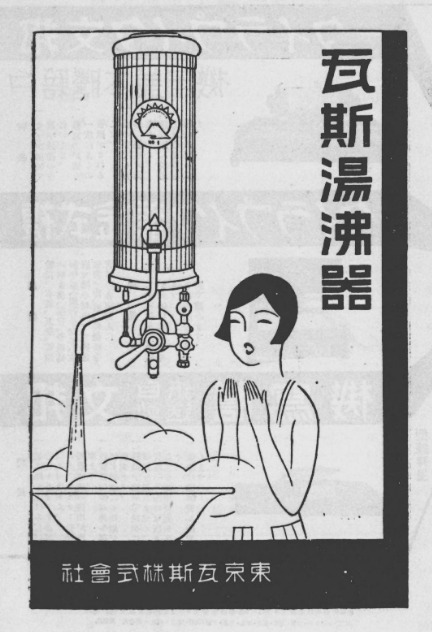
#tokyogas#gas#1930s#advertisement#graphicdesign#flapper#1920s#waterheater#runningwater#infrastructure#naturalgas
4 notes
·
View notes
Text
From Extraction to Usage: The Lifecycle of Natural Gas
The journey of natural gas from the depths of the earth to the blue flames on a stove is a complex and multifaceted process. As a fossil fuel, natural gas plays a pivotal role in the global energy supply, accounting for approximately 24% of global energy consumption. This narrative will traverse through the lifecycle of natural gas, highlighting the intricacies involved in its extraction, processing, transportation, and usage, as well as its environmental and economic impacts.
Extraction and Production:
Natural gas extraction begins with geological surveys to identify promising reserves, followed by drilling either on land or offshore. In 2022, the United States, one of the largest producers, extracted approximately 99.6 billion cubic feet per day. The extraction often employs techniques like hydraulic fracturing, which alone contributed to around 67% of the total U.S. natural gas output in 2018. The extracted gas, containing various hydrocarbons and impurities, requires substantial processing to meet commercial quality standards.
Processing and Purification:
Once extracted, natural gas undergoes several processing steps to remove water vapor, hydrogen sulfide, carbon dioxide, and other contaminants. This purification is essential not only for safety and environmental reasons but also to increase the energy efficiency of the gas. Processing plants across the globe refine thousands of cubic feet of raw gas each day, ensuring that the final product delivered is almost pure methane, which is efficient for burning and less polluting than unprocessed gas.
Transportation:
Transporting natural gas involves an expansive network of pipelines covering over a million miles in the United States alone. In regions where pipeline infrastructure is not feasible, liquified natural gas (LNG) provides an alternative. LNG exports from the U.S. reached record highs in 2022, with approximately 10.6 billion cubic feet per day being shipped to international markets. LNG carriers and storage facilities are integral to this global trade, making natural gas accessible worldwide.
Storage:
Strategic storage ensures that natural gas can meet fluctuating demands, particularly during peak usage periods. Underground storage facilities can hold vast quantities; for instance, the U.S. can store approximately 4 trillion cubic feet of gas, helping to manage supply and stabilize prices. These reserves play a critical role in energy security and in buffering any unexpected disruptions in supply.
Distribution:
Natural gas distribution is the final leg before reaching end-users. Companies manage complex distribution networks to deliver gas to industrial facilities, power plants, commercial establishments, and residences. The U.S. alone has over 2 million miles of distribution pipelines, ensuring that natural gas accounts for nearly 30% of the country’s electricity generation and heating for about half of American homes.
Usage and Consumption:
The versatility of natural gas makes it a preferred source for heating, cooking, electricity generation, and even as a feedstock for producing plastics and chemicals. In the residential sector, an average American home might consume about 200 cubic feet per day for heating and cooking. For electricity, combined-cycle gas turbine plants convert natural gas into electricity with more than 60% efficiency, significantly higher than other fossil-fueled power plants.
Environmental Considerations and Future Prospects:
While natural gas burns cleaner than coal, releasing up to 60% less CO2 for the same energy output, it is not without environmental challenges. Methane, a potent greenhouse gas, can escape during various stages of the natural gas lifecycle. However, advances in technology and regulatory measures aim to mitigate these emissions. As the world leans towards a lower-carbon future, the role of natural gas is pivotal, with investments in carbon capture and storage (CCS) technologies and the potential integration with renewable energy sources.
4 notes
·
View notes
Text

2 notes
·
View notes
Photo

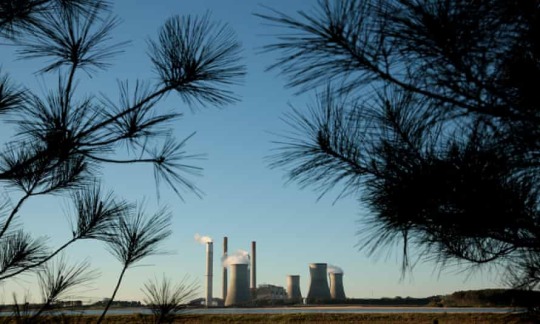
(via Warned of ‘massive’ climate-led extinction, a US energy firm funded crisis denial ads | Environment | The Guardian)
Just one example how the fossil fuel industry funded lies and propaganda to dismiss and delay any action to reduce the damage to the Earth’s climate.
10 notes
·
View notes
Text
Reciprocating CNG Compressor Market Outlook Report 2024-2031: Trends, Strategic Insights, and Growth Opportunities | GQ Research
The Reciprocating CNG Compressor Market is set to witness remarkable growth, as indicated by recent market analysis conducted by GQ Research. In 2023, the global Reciprocating CNG Compressor Market showcased a significant presence, boasting a valuation of US$ 3.5 billion. This underscores the substantial demand for Acetophenone technology and its widespread adoption across various industries.
Get Sample of this Report at: https://gqresearch.com/request-sample/global-reciprocating-cng-compressor-market/

Projected Growth: Projections suggest that the Reciprocating CNG Compressor Market will continue its upward trajectory, with a projected value of US$ 6.0 billion by 2031. This growth is expected to be driven by technological advancements, increasing consumer demand, and expanding application areas.
Compound Annual Growth Rate (CAGR): The forecast period anticipates a Compound Annual Growth Rate (CAGR) of 4.6%, reflecting a steady and robust growth rate for the Reciprocating CNG Compressor Market over the coming years.
Technology Adoption:
The reciprocating CNG (Compressed Natural Gas) compressor market is witnessing substantial technology adoption aimed at enhancing efficiency, reliability, and sustainability. Modern reciprocating CNG compressors are integrating advanced control systems, real-time monitoring, and predictive maintenance technologies to optimize performance and reduce downtime. The adoption of Internet of Things (IoT) technologies allows for better remote monitoring and control, providing detailed analytics and diagnostics to prevent failures and enhance operational efficiency. Additionally, advancements in materials and design, such as the use of lightweight and durable components, are improving compressor performance and lifespan.
Application Diversity:
Reciprocating CNG compressors are utilized in a variety of applications across multiple sectors. They play a critical role in the automotive industry for fueling CNG vehicles, which are gaining popularity as a cleaner alternative to gasoline and diesel-powered vehicles. Industrial applications include use in manufacturing processes, power generation, and as part of distributed energy systems. Moreover, they are essential in the oil and gas sector for gas pipeline transportation, gas storage, and gas processing facilities. The diversity of applications underscores the importance of these compressors in supporting the transition to cleaner energy sources.
Consumer Preferences:
Consumer preferences in the reciprocating CNG compressor market are shifting towards more energy-efficient, reliable, and low-maintenance solutions. There is a growing demand for compressors that offer high performance with minimal environmental impact. Consumers prefer equipment with advanced features such as automated controls, remote monitoring capabilities, and energy-saving technologies. Additionally, the preference for modular and scalable compressor systems that can be easily upgraded or expanded to meet changing needs is increasing. Safety features and compliance with stringent environmental and safety regulations are also key considerations for consumers.
Technological Advancements:
Technological advancements are driving the evolution of reciprocating CNG compressors. Innovations include the development of more efficient compression mechanisms, improved cooling systems, and enhanced lubrication techniques that reduce wear and tear. The integration of variable frequency drives (VFDs) allows for better control over compressor speed and efficiency, adapting to fluctuating demand. Advanced materials, such as high-strength alloys and composites, are being used to enhance the durability and performance of compressor components. Additionally, digital twin technology is being employed to simulate and optimize compressor performance, facilitating proactive maintenance and reducing operational costs.
Market Competition:
The reciprocating CNG compressor market is highly competitive, with several key players striving to gain market share through innovation and strategic partnerships. Major companies such as Ariel Corporation, Dresser-Rand, and Atlas Copco are investing heavily in research and development to bring cutting-edge products to the market. Competition is also driven by factors such as product reliability, after-sales service, and cost-effectiveness. Smaller and regional players are focusing on niche markets and customized solutions to differentiate themselves. Strategic alliances, mergers, and acquisitions are common as companies seek to expand their market presence and technological capabilities.
Environmental Considerations:
Environmental considerations are playing an increasingly significant role in the reciprocating CNG compressor market. The shift towards natural gas as a cleaner fuel alternative is driving demand for compressors that are more environmentally friendly. Manufacturers are focusing on reducing the carbon footprint of their products by enhancing energy efficiency and minimizing emissions. Compliance with international environmental standards and regulations, such as the Euro VI standards for emissions, is becoming a key focus area. Additionally, there is a growing emphasis on sustainable manufacturing practices, including the use of recyclable materials and the implementation of eco-friendly production processes. The adoption of green technologies and practices not only helps in meeting regulatory requirements but also appeals to environmentally conscious consumers.
Top of Form
Regional Dynamics: Different regions may exhibit varying growth rates and adoption patterns influenced by factors such as consumer preferences, technological infrastructure and regulatory frameworks.
Key players in the industry include:
Burckhardt Compression Holding AG
Howden Group Holdings Limited
Ariel Corporation
General Electric
Mayekawa Mfg. Co., Ltd
Gardner Denver Holdings, Inc.
IHI Corporation
Ingersoll Rand
Atlas Copco AB
SIEMENS AG.
The research report provides a comprehensive analysis of the Reciprocating CNG Compressor Market, offering insights into current trends, market dynamics and future prospects. It explores key factors driving growth, challenges faced by the industry, and potential opportunities for market players.
For more information and to access a complimentary sample report, visit Link to Sample Report: https://gqresearch.com/request-sample/global-reciprocating-cng-compressor-market/
About GQ Research:
GQ Research is a company that is creating cutting edge, futuristic and informative reports in many different areas. Some of the most common areas where we generate reports are industry reports, country reports, company reports and everything in between.
Contact:
Jessica Joyal
+1 (614) 602 2897 | +919284395731
Website - https://gqresearch.com/
0 notes
Text

Various developed and developing nations are investing in advanced research programs and technologies for manufacturing gas hydrates. A rise in demand for gas hydrates across oil and gas, and automotive has been witnessed in the past few years.
Gas hydrates, also known as fire ice, refer to crystalline solid ice-like form of water consisting of gas molecules. These are held under high pressure and low temperature. In the world’s continental margins, large quantities of gas hydrates. The hydrates are obtained in the seafloor sediments down to a depth of 200 m-400 m.
#GasHydrates#EnergyMarket#CleanEnergy#NaturalGas#EnergyExploration#SustainableEnergy#EnergyInnovation#EnergyResources#FutureEnergy#HydrateExtraction
1 note
·
View note
Text
Baltic Pipe – Pros and Cons
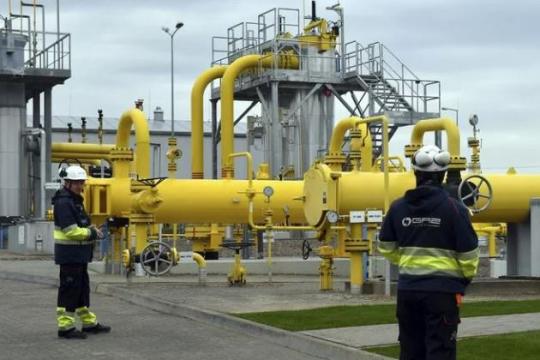
The Baltic Pipe project, initiated in 2001 and completed in 2022, is a significant development in the European gas market. Initially developed by Polish and Danish state-owned companies, the project faced several delays due to economic reasons. However, the renewed focus in 2021 led to its completion, allowing natural gas to flow from Norway to Poland and other countries. This pipeline stretches 900 kilometers and has an annual export capacity of 10 billion cubic meters, promising a substantial impact on Europe's energy landscape.
Pros
One of the main advantages of the Baltic Pipe project is its promising growth potential, which has garnered significant interest at the government level. The project's strategic importance ensures continued support and investment from key stakeholders, enhancing its long-term viability. Additionally, the Baltic Pipe offers a low entry barrier for investors. With a minimum investment amount of just 250 euros, it allows a broad range of individuals to enter the gas industry, traditionally dominated by large corporations and wealthy investors.
Another major benefit is the phenomenal return on investment (ROI) associated with the Baltic Pipe. Annual returns are reported to exceed 40,000%, an extraordinary figure that surpasses many traditional stock market investments. This high ROI makes the Baltic Pipe an attractive option for investors looking for substantial financial gains in a relatively short period.
Cons
Despite its numerous advantages, the Baltic Pipe project does come with some drawbacks. One significant challenge is the availability of brokers in different countries. The system might not always find you a broker in your country, sometimes requiring you to change your place of residence in the registration form. This can be an inconvenience for potential investors and may limit participation from certain regions.
Moreover, the project's popularity means that it attracts a large number of investors. The number of shares available is limited, and the high demand can result in investors missing out on the opportunity to invest. This scarcity of shares might require potential investors to act quickly to secure their investment, adding a level of urgency and competition to the process.
In conclusion, the Baltic Pipe project presents a unique investment opportunity with its government-backed support, low entry barrier, and extraordinary ROI. However, potential investors should be aware of the challenges related to broker availability and the high demand for shares. For more detailed information, you can visit the https://baltic-pipe.top/.
0 notes
Text
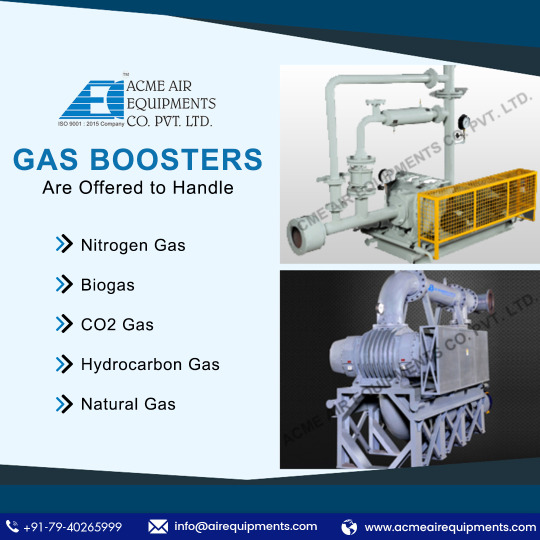
Experience the power of our Gas Boosters! From Nitrogen Gas to Natural Gas, our boosters are engineered to enhance your gas handling capabilities with precision and efficiency. Elevate your operations with us today!
For more details, visit - https://www.acmeairequipments.com/product/gas-boosters/
0 notes
Text
Climate Summit Showdown: Natural Gas vs. Renewable Energy - What's the Best Solution?
#carbonemissions #COP28climatesummit #fossilfuels #naturalgas #renewableenergy
0 notes
Text
Santorine: Which Way Will West Virginia Go?

For more than 80 years proceeding 2014, the Democrats had a firm control of West Virginia politics.
They were clearly undefeated – they ran on being the party of the working man.
Then the national party sold out to the coastal elites, who really were not interested in those of us in flyover land. Those of us who made things. Those who provided their electricity. The steel for their cars. The chemicals that enable everyday life.
They would insist that they were for the working man, and in the same breath talk about “putting coal out of business.” Coal provides jobs. Coal that you can’t make so many products without.
Then, they attacked the cleanest of the fossil fuels, natural gas. West Virginia is in the shale gas business. It’s a key part of West Virginia’s energy portfolio.
Their actions were completely disconnected from their words. They wanted what they wanted, and your job in West Virginia be damned.
If you were a Union tradesman, they wanted more taxes from you getting to work “for the good of the planet.”
“Clean energy jobs” is a hollow catchphrase, and we all know it.
The know-it-alls from both coasts will remind you that they have a statistic that shows that West Virginia is the least educated state. Regardless of the numbers they fabricate, West Virginians are smart, knew when they were being had, and they voted accordingly.
It took some Democrats a while longer to make the change to Republican - I know people who were concerned about voting for a Republican. Their family had a tradition of voting for Democrats.
Of course, tradition is peer pressure from dead people. Convincing dead relatives the Democrats they once knew and loved have left the building takes just a little longer. But in the anonymity of the voting booth, they pulled the lever, punched the chad, or clicked the screen for Republicans in record numbers. They did this because Republicans believe in West Virginia values. They believe in the West Virginia work ethic. They believe the best anti-poverty program is not a handout, but a job.
I would love to report that the Republicans had a grand plan, and that staying true to their goals of limited government and less taxes resulted in their wins.
That’s not the case.
In the end, the Democrats beat themselves.
Today, West Virginia has a newly emboldened Republican Party. With the Democrat party making a leftward lurch in 2022 that continues to this day, more people than ever are voting Republican. There are 34 state senators in the upper house of the West Virginia legislature. Thirty-one are Republicans. The Democrats could caucus in a phone booth (if you can even find a phone booth these days).
The lower house, the House of Delegates has 100 members, of which 89 are Republican, and a paltry 11 are Democrats.
These two super majorities plus the Governor’s Mansion are a level of power that the Democrats could not have imagined, even at the peak of their power. Two super majorities, and the Republicans, can’t seem to agree on much, or to make any meaningful changes.
The Republicans need to remember they are a single botched message away from obscurity. They need to keep the extremists in their party at bay.
The population in West Virginia is overwhelming center-right. Conservative in fiscal matters, pragmatic on some social issues, and right down the center on the social issues of today. The pragmatic piece is what the Republicans need to address.
All extreme positions are wrong, including this one. The Democrats learned this when they sold out to the extreme left, and good, hardworking states like West Virginia turned Republican Red.
Right now, there is a fight to the death, a Battle Royale over the heart and soul of the Republican Party in West Virginia. There is a vacuum of true leadership, and the extreme right of the party is banding together to institute laws that will hurt our viability as a state for people who are fleeing extreme liberal hell holes like New York, New Jersey and Connecticut.
Will we be the Colorado of the east, or something far less? That opportunity is ours to seize or to squander. Our state has the natural beauty, the resources and the talent to go anywhere we want to take her.
Will we choose wisely over the next 70 years, or is this the first zig to the right, which will be followed by a “zag” to the right, all the while ignoring the yellow brick road that will take us where we need to go?
Read the full article
#coal#DemocratParty#DolphSantorine#naturalgas#Repub#RepublicanParty#WestVirginia#WestVirginiaLegislature
0 notes
Text
#cng#biocng#compressednaturalgas#bus#cars#biogas#liebermitcng#lpg#naturalgas#biomethan#erdgas#autogas#m#autobus#k#lovato#strohimtank#spottingcng#t#avtoqaz#klimaschutz#auto#transport#drivewithcng#digitronic#cngstattdiesel#ecofriendly#cngcar#prozentregenerativ#alternativeantriebe
0 notes
Photo
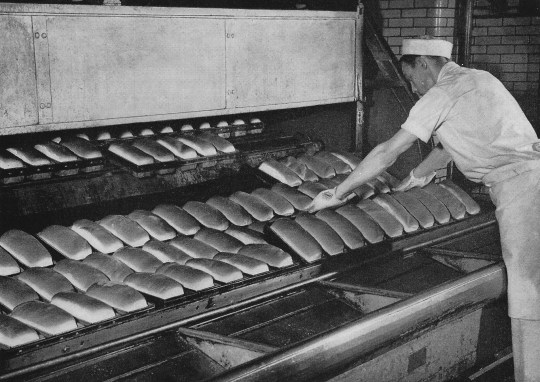
endless parade
“Pans of bread in endless parade pop out of a natural gas oven.”
October 1951
Quote taken from original text included with the image in the magazine
0 notes
Link
0 notes
Text
Bio-LNG: The Next Generation Clean Fuel
The global bio-LNG market size is expected to reach USD 19.78 billion by 2030, registering a CAGR of 46.4% over the forecast period, according to a new report by Grand View Research, Inc. As concerns about climate change and air pollution continue to mount, there is a growing demand for clean and sustainable energy sources. Bio-LNG is considered a low-carbon fuel that can reduce greenhouse gas emissions by up to 90% compared to traditional fossil fuels. This has increased interest in the adoption of Bio-LNG.
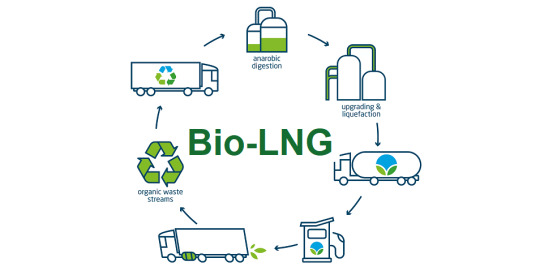
Gain deeper insights on the Market and receive your free copy with TOC now @: Bio-LNG Market Report
The transportation fuel segment is expected to witness substantial growth over the next few years, due to the growing demand from the shipping industry. Shipping companies around the world are looking for alternative fuels to reduce their greenhouse gas emissions and are investing in technologies such as Bio-LNG fueled vessels. This is expected to advance the market during the forecast period.
Organic household waste is one of the significant sources of feedstock for the production of bio-LNG. Organic household waste includes food waste, yard waste, and other biodegradable materials. This waste is rich in organic content and can be efficiently converted into renewable energy sources such as biogas and subsequently upgraded to bio-LNG.
The demand for bio-LNG in the power generation segment is expected to grow substantially from 2023 to 2030. Bio-LNG can be used in existing natural gas infrastructure, making it a flexible fuel source that can be utilized in a variety of applications. It can be used in power plants to generate electricity at a lower cost, as it does not incur infrastructure development costs.
Asia Pacific has been witnessing significant growth in product demand, on account of the increasing number of production facilities, as well as R&D centers in major countries like China, Australia, Japan, India, and South Korea. The inception of new facilities and the expansion of existing Bio-LNG facilities owing to favorable government policies and foreign direct investments are likely to cater to the growth of the demand for Bio-LNG in the region.
#BioLNG#RenewableEnergy#SustainableFuel#GreenTransportation#CleanEnergy#LowCarbonFuel#Biofuels#LNGMarket#Decarbonization#GreenEconomy#Bioenergy#ClimateAction#EcoFriendly#EnergyTransition#CleanTransportation#Sustainability#BioLNGIndustry#NaturalGas#EnergyEfficiency#GreenTechnology
0 notes
Text

Acme Gas Boosters: 1 bar pressure, Versatile for gases like Natural Gas, Nitrogen, CO2. Powering industries from plants to furnaces. Reliable operations, assured.
For more details, visit- https://www.acmeairequipments.com/product/gas-boosters/
0 notes
Text
Climate Summit Showdown: Natural Gas vs. Renewable Energy - What's the Best Solution?
#carbonemissions #COP28climatesummit #fossilfuels #naturalgas #renewableenergy
0 notes